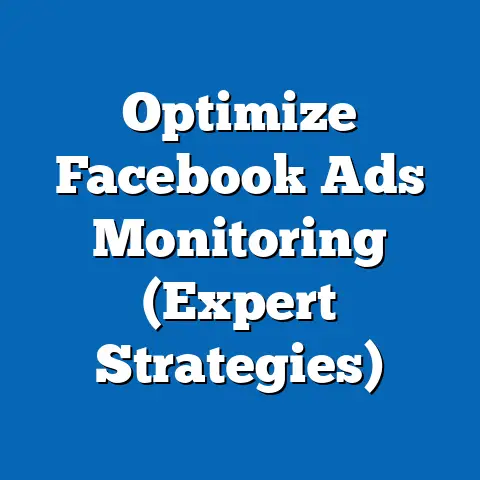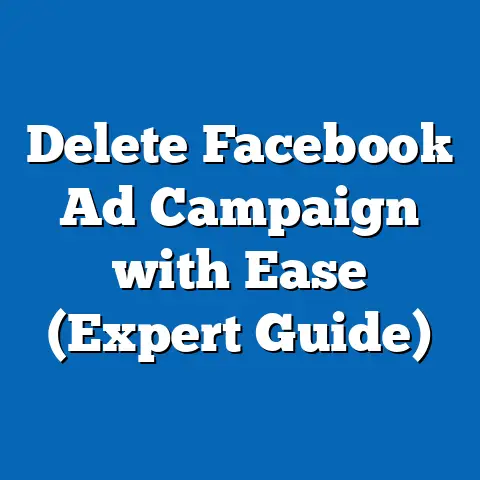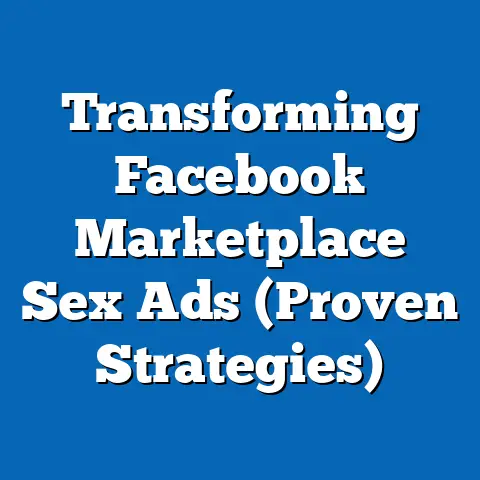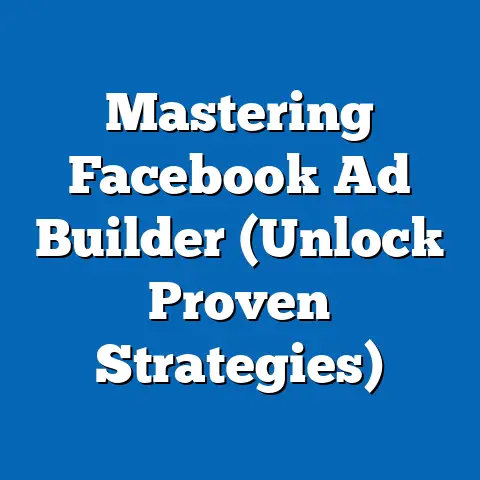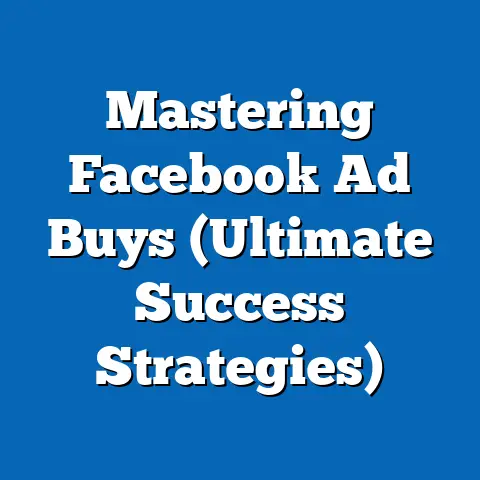Boost Ads with Facebook Assistant (Ultimate Guide)
Imagine this: you’ve poured your heart and soul into launching your latest product. You’ve meticulously crafted every detail, from the packaging to the marketing materials. The launch date arrives, filled with excitement and anticipation. But as the days turn into weeks, a gnawing anxiety begins to creep in. The sales are trickling in at a snail’s pace, and you can’t shake off the feeling that you’re missing out on something crucial. You’ve tried everything you know, tweaked your targeting, adjusted your budget, but nothing seems to significantly move the needle. What if there was a secret weapon, a hidden tool that could turn your struggling Facebook ad campaign into a roaring success overnight?
Or picture this: you’re running multiple ad campaigns simultaneously, each with its own unique target audience, budget, and creative assets. You’re drowning in data, struggling to make sense of the complex metrics, and feeling overwhelmed by the constant need to monitor and optimize. You dream of a world where ad management is streamlined, where insights are readily available, and where you can focus on the creative aspects of your campaigns rather than getting bogged down in the technical details.
Enter the Facebook Assistant – a powerful, often overlooked tool that promises to revolutionize the way you approach advertising on one of the largest social media platforms in the world. It’s more than just a helper; it’s your AI-powered co-pilot in the complex world of Facebook advertising.
What if you could automate your ad optimization process? What if you could tap into advanced algorithms that analyze data and suggest improvements in real-time? What if your ads could reach the right audience without your constant, manual oversight? The suspense builds as you realize that Facebook Assistant could hold the key to unlocking your ad’s full potential.
In this ultimate guide, I’m going to take you on a deep dive into the world of Facebook Assistant. Drawing from my years of experience running countless Facebook ad campaigns for diverse businesses, I’ll share practical tips, actionable strategies, and real-world examples to help you harness the power of this incredible tool. I’ve seen firsthand how Facebook Assistant can transform struggling campaigns into high-performing assets, and I’m excited to share my knowledge with you.
So, buckle up and get ready to discover how Facebook Assistant can help you boost your ads, save time, and achieve unprecedented results. Imagine the possibilities if you embrace this tool – what could your next campaign achieve? Let’s find out.
Understanding Facebook Ads
Before we dive into the specifics of Facebook Assistant, it’s crucial to have a solid understanding of the fundamentals of Facebook advertising. After all, the Assistant is designed to enhance your existing campaigns, not replace a sound strategy.
Facebook advertising has become an indispensable component of digital marketing for businesses of all sizes. With billions of active users, Facebook offers unparalleled reach and targeting capabilities, allowing you to connect with your ideal customers in a highly personalized way.
Why is Facebook advertising so important? Here’s a quick breakdown:
- Massive Reach: Facebook boasts billions of active users worldwide, making it a prime platform to reach a vast and diverse audience.
- Granular Targeting: Facebook’s advanced targeting options allow you to pinpoint your ideal customers based on demographics, interests, behaviors, and more.
- Cost-Effectiveness: Compared to traditional advertising methods, Facebook ads can be incredibly cost-effective, especially when optimized correctly.
- Measurable Results: Facebook provides detailed analytics and reporting tools, allowing you to track the performance of your ads and measure your ROI.
- Brand Building: Facebook ads can help you build brand awareness, increase engagement, and foster customer loyalty.
I remember when I first started running Facebook ads years ago. I was amazed by the level of control I had over who saw my ads. I could target people based on their hobbies, their favorite TV shows, even their job titles! It was a game-changer compared to traditional advertising, where you were essentially casting a wide net and hoping to catch the right fish.
Types of Facebook Ads
Facebook offers a wide variety of ad formats to suit different marketing objectives. Here are some of the most popular types:
- Image Ads: These are simple yet effective ads that feature a single image and accompanying text. They’re great for showcasing products, promoting events, or building brand awareness.
- Video Ads: Video ads are highly engaging and can be used to tell stories, demonstrate products, or share testimonials. They’re particularly effective at capturing attention and driving conversions.
- Carousel Ads: Carousel ads allow you to showcase multiple images or videos in a single ad unit. This format is ideal for highlighting different features of a product, showcasing a collection of items, or telling a story in a sequential manner.
- Collection Ads: Collection ads are designed to drive product discovery and sales. They feature a main image or video along with a selection of related products. When users click on a product, they’re taken to a full-screen experience where they can learn more and make a purchase.
- Lead Ads: Lead ads are designed to capture leads directly within Facebook. They feature a pre-filled form that users can submit with just a few taps. This format is ideal for collecting email addresses, gathering contact information, or qualifying potential customers.
- Instant Experience Ads: (Formerly Canvas Ads) Instant Experience ads are full-screen, mobile-optimized experiences that load instantly when users click on them. They can include a mix of images, videos, text, and interactive elements. This format is ideal for creating immersive brand experiences and driving engagement.
Each of these ad types has its own unique advantages and disadvantages. The best choice for your business will depend on your specific goals, target audience, and budget.
The Effectiveness of Facebook Ads: Statistics Don’t Lie
To illustrate the power of Facebook advertising, let’s take a look at some compelling statistics:
- Facebook’s ad revenue in 2023 was over $134 billion. This demonstrates the immense value businesses place on the platform’s advertising capabilities.
- The average click-through rate (CTR) for Facebook ads across all industries is around 0.9%. While this may seem low, it’s important to remember that CTR varies significantly depending on the industry, target audience, and ad creative.
- Facebook ads can reach 31.4% of the world’s population. This highlights the platform’s unparalleled reach and potential for connecting with a global audience.
- 83% of marketers use Facebook for advertising. This indicates that Facebook is a mainstream and essential platform for digital marketing.
These statistics paint a clear picture: Facebook advertising is a powerful tool that can drive significant results for businesses of all sizes. However, it’s important to remember that success on Facebook requires a strategic approach, continuous optimization, and a willingness to adapt to the ever-changing landscape.
Key Takeaway: Facebook advertising is a crucial component of digital marketing, offering unparalleled reach, targeting capabilities, and measurable results. Understanding the different types of ads and their unique advantages is essential for creating effective campaigns.
Next Step: Before moving on to Facebook Assistant, take some time to review your current Facebook advertising strategy. Are you leveraging the right ad formats? Are you targeting the right audience? Are you tracking your results effectively? Identifying areas for improvement will help you maximize the benefits of using Facebook Assistant.
Introduction to Facebook Assistant
Now that we’ve covered the basics of Facebook advertising, let’s dive into the heart of this guide: the Facebook Assistant.
What exactly is Facebook Assistant?
In simple terms, Facebook Assistant is a suite of AI-powered tools designed to help you manage and optimize your Facebook ad campaigns more effectively. It’s like having a team of data analysts and marketing experts working alongside you, providing insights, recommendations, and automated solutions to improve your ad performance.
Think of it as your personal advertising concierge. It’s designed to simplify complex tasks, identify opportunities for improvement, and ultimately help you achieve your marketing goals.
Integrating with the Facebook Advertising Platform
One of the key strengths of Facebook Assistant is its seamless integration with the Facebook advertising platform. It’s not a separate, third-party tool that you have to connect and configure. Instead, it’s built directly into the Ads Manager, making it easy to access and use.
This integration allows the Assistant to analyze your campaign data in real-time, identify patterns and trends, and provide personalized recommendations based on your specific goals and objectives.
Primary Functions and Features
Facebook Assistant offers a wide range of functions and features, including:
- Automated Optimization: The Assistant can automatically adjust your bids, budgets, and targeting options to improve your ad performance.
- Performance Insights: The Assistant provides detailed insights into your ad performance, highlighting key metrics and identifying areas for improvement.
- Audience Recommendations: The Assistant can suggest new audiences to target based on your existing customer data and campaign performance.
- Creative Suggestions: The Assistant can offer ideas for improving your ad creative, such as headlines, images, and call-to-actions.
- Budget Allocation: The Assistant can help you allocate your budget more effectively across different campaigns and ad sets.
- Anomaly Detection: The Assistant can identify unusual patterns in your data, such as sudden drops in performance or unexpected spikes in costs.
I remember one time when I was running a campaign for a local restaurant. The campaign was performing well initially, but then suddenly started to decline. I couldn’t figure out what was going wrong. Fortunately, Facebook Assistant detected an anomaly in my data – it turned out that my ads were being shown to a different demographic than I had intended. Once I corrected the targeting, the campaign quickly rebounded.
AI and Machine Learning: The Engine Behind the Assistant
At the heart of Facebook Assistant lies a powerful combination of artificial intelligence (AI) and machine learning (ML). These technologies allow the Assistant to:
- Analyze vast amounts of data: The Assistant can process and analyze data from millions of ad campaigns, identifying patterns and trends that would be impossible for a human to detect.
- Learn from experience: The Assistant continuously learns from its own performance and the performance of other campaigns, improving its recommendations over time.
- Personalize recommendations: The Assistant tailors its recommendations to your specific business goals, target audience, and campaign performance.
- Automate repetitive tasks: The Assistant can automate many of the time-consuming tasks associated with ad management, such as bid adjustments and budget allocation.
The use of AI and ML is what truly sets Facebook Assistant apart from other ad management tools. It’s not just a reporting dashboard or a rule-based automation system. It’s a dynamic, intelligent system that can adapt to the ever-changing landscape of Facebook advertising and help you achieve your marketing goals.
Key Takeaway: Facebook Assistant is a suite of AI-powered tools designed to help you manage and optimize your Facebook ad campaigns more effectively. It integrates seamlessly with the Facebook advertising platform and offers a wide range of functions and features, including automated optimization, performance insights, and audience recommendations.
Next Step: Familiarize yourself with the Facebook Assistant interface within Ads Manager. Explore the different features and options available. Don’t be afraid to experiment and see how the Assistant can help you improve your ad performance.
Setting Up Your Facebook Ad Campaign
Before you can unleash the power of Facebook Assistant, you need to have a well-structured Facebook ad campaign in place. Setting up your campaign correctly from the outset is crucial for maximizing the benefits of the Assistant.
Here’s a step-by-step guide to setting up a Facebook ad campaign:
- Define Your Objectives: What do you want to achieve with your Facebook ads? Are you trying to generate leads, drive sales, increase brand awareness, or something else? Defining your objectives clearly will help you choose the right campaign type and targeting options.
- Choose Your Campaign Objective: Facebook offers a variety of campaign objectives, such as awareness, traffic, engagement, leads, app promotion, and sales. Select the objective that aligns with your marketing goals.
- Define Your Target Audience: Who are you trying to reach with your ads? Consider factors such as demographics, interests, behaviors, and location. Facebook’s detailed targeting options allow you to pinpoint your ideal customers with remarkable precision.
- Set Your Budget: How much are you willing to spend on your Facebook ads? You can set a daily budget or a lifetime budget. It’s important to choose a budget that is sustainable and aligned with your marketing goals.
- Choose Your Ad Placements: Where do you want your ads to appear? Facebook offers a variety of ad placements, such as the Facebook News Feed, Instagram Feed, Audience Network, and Messenger. You can choose automatic placements or manually select the placements that are most relevant to your target audience.
- Create Your Ad Creative: This is where you design the visual and textual elements of your ad. Choose compelling images or videos, write engaging headlines and descriptions, and include a clear call-to-action.
- Track Your Results: Facebook provides detailed analytics and reporting tools that allow you to track the performance of your ads. Monitor key metrics such as impressions, clicks, conversions, and cost-per-acquisition (CPA).
I always tell my clients to start with a clear understanding of their target audience. Who are they trying to reach? What are their interests? What are their pain points? The more you know about your audience, the more effective your ads will be.
Tips for Defining Target Audiences
Defining your target audience is one of the most critical steps in setting up a successful Facebook ad campaign. Here are some tips to help you pinpoint your ideal customers:
- Use Facebook Pixel: Install the Facebook Pixel on your website to track user behavior and build custom audiences based on website visitors.
- Create Lookalike Audiences: Use your existing customer data to create lookalike audiences that target people who are similar to your best customers.
- Leverage Facebook’s Interest Targeting: Target people based on their interests, hobbies, and passions.
- Target Based on Behaviors: Target people based on their online and offline behaviors, such as purchase history, travel habits, and device usage.
- Experiment with Different Audience Combinations: Don’t be afraid to test different audience combinations to see what works best for your business.
Setting Budgets and Choosing Ad Formats
Setting the right budget and choosing the appropriate ad formats are also crucial for campaign success. Here are some tips to keep in mind:
- Start Small and Scale Up: Begin with a small budget and gradually increase it as you see positive results.
- Monitor Your Results Closely: Keep a close eye on your campaign performance and adjust your budget as needed.
- Choose Ad Formats That Align with Your Goals: Select ad formats that are best suited for your specific marketing objectives.
- Test Different Ad Formats: Experiment with different ad formats to see what resonates best with your target audience.
Linking Facebook Assistant to Your Ad Campaign
Once you’ve set up your Facebook ad campaign, linking it to Facebook Assistant is a simple process. The Assistant is typically enabled by default, but you can double-check by going to your Ads Manager settings and ensuring that the “Assistant” feature is turned on.
The Assistant will then begin to analyze your campaign data and provide personalized recommendations to help you improve your performance.
Key Takeaway: Setting up your Facebook ad campaign correctly from the outset is crucial for maximizing the benefits of Facebook Assistant. Define your objectives, choose your campaign objective, define your target audience, set your budget, choose your ad placements, and create compelling ad creative.
Next Step: Review your existing Facebook ad campaigns and ensure that they are set up correctly. Pay close attention to your targeting options, budget, and ad creative. If you’re starting a new campaign, follow the steps outlined above to ensure that you’re setting it up for success.
Utilizing Facebook Assistant for Ad Optimization
Now that you have a Facebook ad campaign set up and linked to the Assistant, it’s time to start using it to optimize your ad performance.
Facebook Assistant can provide valuable insights and recommendations to help you improve your targeting, bidding, creative, and overall campaign strategy.
Analyzing Ad Performance Metrics
One of the primary functions of Facebook Assistant is to analyze your ad performance metrics. The Assistant can track a wide range of metrics, including:
- Impressions: The number of times your ad was displayed.
- Reach: The number of unique people who saw your ad.
- Clicks: The number of times people clicked on your ad.
- Click-Through Rate (CTR): The percentage of people who saw your ad and clicked on it.
- Conversions: The number of people who took a desired action after clicking on your ad, such as making a purchase or filling out a form.
- Cost-Per-Click (CPC): The average cost you pay for each click on your ad.
- Cost-Per-Acquisition (CPA): The average cost you pay for each conversion.
- Return on Ad Spend (ROAS): The amount of revenue you generate for every dollar you spend on advertising.
The Assistant can present this data in a variety of formats, such as charts, graphs, and tables. It can also highlight key trends and patterns, such as spikes in impressions or drops in conversions.
Interpreting Data and Making Informed Decisions
The real value of Facebook Assistant lies in its ability to help you interpret the data and make informed decisions. The Assistant can provide personalized recommendations based on your campaign performance, such as:
- Adjusting Your Bids: The Assistant can recommend adjusting your bids to improve your ad placement and lower your costs.
- Refining Your Targeting: The Assistant can suggest refining your targeting options to reach a more relevant audience.
- Improving Your Ad Creative: The Assistant can offer ideas for improving your ad creative, such as headlines, images, and call-to-actions.
- Optimizing Your Landing Page: The Assistant can analyze your landing page and provide recommendations for improving its conversion rate.
It’s important to remember that Facebook Assistant is a tool, not a replacement for your own judgment and expertise. You should always carefully consider the Assistant’s recommendations and make your own decisions based on your specific business goals and objectives.
Common Recommendations and Adjustments
Here are some examples of common recommendations and adjustments that Facebook Assistant might suggest:
- “Your ad set is reaching a broad audience. Consider narrowing your targeting to improve performance.” This recommendation suggests that you may be wasting your budget by showing your ads to people who are not interested in your product or service.
- “Your cost-per-click is higher than average. Try adjusting your bids or improving your ad creative.” This recommendation suggests that you may be paying too much for each click on your ad.
- “Your conversion rate is low. Consider optimizing your landing page or improving your ad targeting.” This recommendation suggests that you may be struggling to convert clicks into customers.
- “Your ad set is not spending its budget. Try increasing your bids or broadening your targeting.” This recommendation suggests that you may be missing out on potential customers by not spending your full budget.
I’ve found that the Assistant’s recommendations are often a great starting point for optimizing my campaigns. However, it’s important to remember that every business is different, and what works for one campaign may not work for another.
Key Takeaway: Facebook Assistant can help you analyze your ad performance metrics, interpret the data, and make informed decisions. The Assistant provides personalized recommendations based on your campaign performance, such as adjusting your bids, refining your targeting, and improving your ad creative.
Next Step: Regularly monitor your Facebook ad campaigns using the Facebook Assistant. Pay close attention to the Assistant’s recommendations and make adjustments to your campaigns as needed. Remember to track your results and measure the impact of your changes.
Advanced Techniques with Facebook Assistant
Once you’ve mastered the basics of using Facebook Assistant, you can start exploring more advanced techniques to maximize its effectiveness.
A/B Testing with Facebook Assistant
A/B testing, also known as split testing, is a powerful technique for optimizing your Facebook ad campaigns. It involves creating two or more versions of an ad and showing them to different segments of your audience to see which one performs better.
Facebook Assistant can facilitate A/B testing by helping you:
- Identify Key Variables to Test: The Assistant can suggest which elements of your ad to test, such as headlines, images, or call-to-actions.
- Create Ad Variations: The Assistant can help you create variations of your ad by suggesting different headlines, images, or call-to-actions.
- Track Results: The Assistant can track the performance of each ad variation and identify the winner.
A/B testing is an iterative process. You should continuously test different elements of your ad to see what resonates best with your audience.
Leveraging Audience Insights
Facebook Assistant can also help you leverage audience insights to refine your ad targeting and improve your conversion rates.
The Assistant can provide you with detailed information about your audience, such as:
- Demographics: Age, gender, location, education, and income.
- Interests: Hobbies, passions, and favorite brands.
- Behaviors: Online and offline activities, such as purchase history, travel habits, and device usage.
By understanding your audience better, you can create ads that are more relevant and engaging. You can also use this information to refine your targeting options and reach a more qualified audience.
Improving Conversion Rates
Ultimately, the goal of Facebook advertising is to drive conversions. Whether it’s generating leads, driving sales, or increasing brand awareness, you want people to take a desired action after seeing your ad.
Facebook Assistant can help you improve your conversion rates by:
- Optimizing Your Ad Creative: The Assistant can suggest improvements to your ad creative, such as headlines, images, and call-to-actions.
- Improving Your Landing Page: The Assistant can analyze your landing page and provide recommendations for improving its conversion rate.
- Refining Your Targeting: The Assistant can suggest refining your targeting options to reach a more qualified audience.
- Testing Different Ad Placements: The Assistant can help you test different ad placements to see which ones generate the highest conversion rates.
I’ve found that making small changes to my ad creative or landing page can often have a significant impact on my conversion rates. It’s important to continuously experiment and test different approaches to see what works best for your business.
Key Takeaway: Facebook Assistant can help you implement advanced techniques such as A/B testing and audience insights to maximize the effectiveness of your ad campaigns. By continuously testing, analyzing, and optimizing your ads, you can drive higher conversion rates and achieve your marketing goals.
Next Step: Start experimenting with A/B testing and audience insights using Facebook Assistant. Identify key variables to test in your ads and analyze your audience data to refine your targeting options. Continuously monitor your results and make adjustments as needed.
Real-World Case Studies
To illustrate the power of Facebook Assistant, let’s take a look at some real-world case studies of businesses that have successfully used the tool to boost their ad performance.
Case Study 1: E-commerce Store Increases Sales by 30%
A small e-commerce store selling handmade jewelry was struggling to generate sales through Facebook ads. They were targeting a broad audience and their ads were not resonating with potential customers.
After implementing Facebook Assistant, they were able to:
- Refine their targeting: The Assistant suggested targeting a more specific audience based on interests and behaviors related to jewelry and fashion.
- Improve their ad creative: The Assistant provided recommendations for improving their ad headlines and images, making them more visually appealing and relevant to their target audience.
- Optimize their landing page: The Assistant analyzed their landing page and provided recommendations for improving its design and user experience.
As a result of these changes, the e-commerce store saw a 30% increase in sales within just a few weeks.
Case Study 2: Local Restaurant Generates More Leads
A local restaurant was looking to generate more leads through Facebook ads. They were running ads promoting their menu and special offers, but they were not seeing the desired results.
After implementing Facebook Assistant, they were able to:
- Adjust their bidding strategy: The Assistant recommended adjusting their bidding strategy to optimize for lead generation.
- Test different ad placements: The Assistant helped them test different ad placements, such as the Facebook News Feed and Instagram Feed, to see which ones generated the most leads.
- Improve their lead form: The Assistant provided recommendations for improving their lead form, making it easier for people to submit their contact information.
As a result of these changes, the restaurant saw a significant increase in the number of leads generated through Facebook ads.
Key Takeaways and Lessons Learned
These case studies highlight several key takeaways and lessons learned about using Facebook Assistant:
- Targeting is crucial: Refining your targeting options is essential for reaching the right audience and maximizing your ad performance.
- Creative matters: Improving your ad creative can make a significant difference in your click-through rates and conversion rates.
- Optimization is ongoing: Continuously monitoring your results and making adjustments to your campaigns is essential for long-term success.
- Facebook Assistant is a powerful tool: Facebook Assistant can provide valuable insights and recommendations to help you improve your ad performance.
I’ve seen firsthand how Facebook Assistant can transform struggling campaigns into high-performing assets. However, it’s important to remember that the Assistant is just a tool. It’s up to you to use it effectively and make informed decisions based on your specific business goals and objectives.
Key Takeaway: Real-world case studies demonstrate the transformative potential of Facebook Assistant in boosting ad performance. By refining targeting, improving ad creative, and continuously optimizing campaigns, businesses can achieve significant results.
Next Step: Analyze your own Facebook ad campaigns and identify areas where you can apply the lessons learned from these case studies. Start experimenting with different targeting options, ad creative, and bidding strategies to see what works best for your business.
Conclusion
In this ultimate guide, we’ve explored the power of Facebook Assistant and how it can transform your Facebook ad campaigns from struggling assets into high-performing engines of growth. We’ve covered the fundamentals of Facebook advertising, delved into the specifics of Facebook Assistant, and examined real-world case studies that demonstrate its effectiveness.
From automating optimization to providing valuable performance insights, Facebook Assistant offers a wealth of features designed to simplify ad management and boost your ROI. By leveraging the power of AI and machine learning, the Assistant can help you target the right audience, create compelling ad creative, and optimize your bidding strategy for maximum impact.
But perhaps the most important takeaway is that Facebook Assistant is not a magic bullet. It’s a tool that requires your active participation and informed decision-making. You need to understand your business goals, define your target audience, and continuously monitor your results to ensure that you’re on the right track.
So, now it’s time to take the leap and harness the capabilities of Facebook Assistant for your own ad campaigns. Don’t be afraid to experiment, test different approaches, and learn from your mistakes. The world of Facebook advertising is constantly evolving, and the key to success is to stay informed, adaptable, and always willing to try new things.
Imagine the possibilities if you embrace this tool – what could your next campaign achieve? Could you double your sales? Could you generate a flood of new leads? Could you build a brand that resonates with millions of people around the world?
The answer, my friend, is within your reach. Embrace the power of Facebook Assistant, and unlock the full potential of your Facebook advertising campaigns. The future of your business may very well depend on it.

